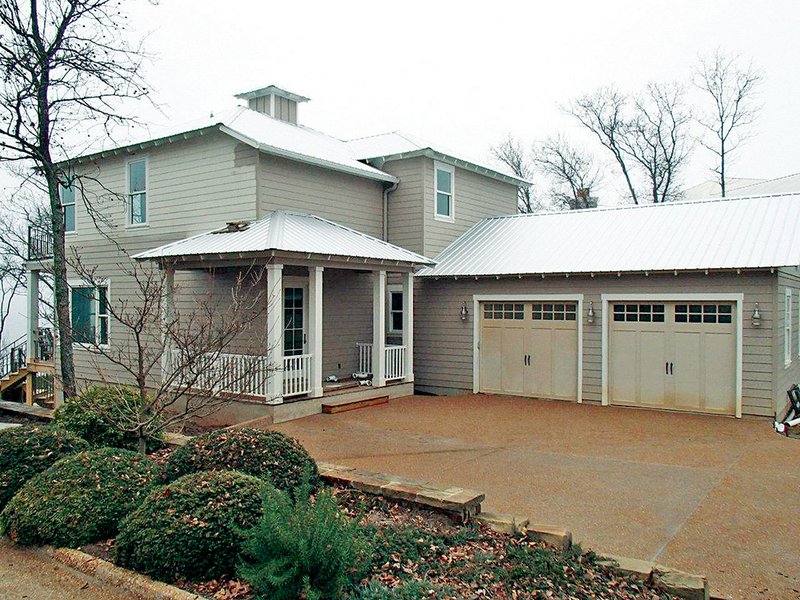HEBER SPRINGS — Construction is complete on the 2013 Doug Rye Energy Efficient Model Home on Greers Ferry Lake in Heber Springs.
In cooperation with First Electric Cooperative, the home was constructed under the direction of Doug Rye, a nationally known energy-efficiency expert and radio-show host. Homeowners Glenn and Mary Jo Hoffsommer partnered with First Electric to offer the home for educational purposes to demonstrate properly installed energy-efficient components and measures.
Members of the public viewed the 2013 model home and had the chance to speak with Rye and others involved in the design and construction during an open house Dec. 14.
The model home was designed by Hunter Ryan and built by Willie Stone Construction. Some of the home’s energy-efficient features include two air-source heat pumps with metal ductwork sealed with mastic tape at the joints. The home also has two Energy Star-rated GE Hybrid water heaters, which use up to 62 percent less energy than a standard electric 50-gallon water heater. The home includes windows that are fiberglass to wood, double-pane, low-e glass and argon-gas filled.
Cleburne County Insulation installed foam insulation that encapsulates the attic,and foam insulation was also installed underneath the flooring joists. It fills and seals electrical and plumbing penetrations, holes, cracks and joints, which is effective in reducing air infiltration, moisture and heat transfer – the main reasons for high heating and cooling costs. Densely packed blown cellulose insulation covers the walls and corner cavities. In addition, Cleburne County Insulation caulked and sealed all cracks and penetrations prior to installing the insulation.
Rye said one highlight of this year’s home, at 65 Brighton Point Lane, is the foam-encapsulated attic. This process eliminates the necessity for attic ventilation. Also, the attic becomes a semi-conditioned area when the supply-air ducting is located in the attic.
“It greatly helps heating and cooling and solves many problems homes have related to air flow,” Rye said.
Although Rye agreed that many homes would benefit from an encapsulated attic, he suggested homeowners interested in saving on energy costs first have an energy audit of their home by a trained professional using a blower door test and/or infrared camera technology. The results will let the owner know which measures to focus on first.
Homeowner Glenn Hoffsommer described himself as a home-energy enthusiast and approached the Electric Cooperatives of Arkansas about building a Doug Rye Energy Efficient Model Home because he was familiar with Rye’s long-standing work in the field of building science.
“When I can make conscious decisions to save energy and then purchase energy-efficient appliances that save even more energy, I save money, preserve resources and am a better consumer that pushes manufacturers to innovate more,” Hoffsommer said.
The Electric Cooperatives of Arkansas has partnered with Rye on model homes since 1997. Bret Curry is the manager of energy marketing for the Electric Cooperatives of Arkansas and coordinates the model-home program.
“Because of the unique electric-cooperative business model, it’s in our nature to educate members about the benefits of energy-efficient construction and retrofitting of existing homes,” Curry said. “Homes built with energy-efficient components and measures not only use energy wisely, but byproducts are conservation, comfort and a manageable electric bill.”
For photos and details on the model home’s construction, visit www.firstelectric.coop/2013-model-home.
